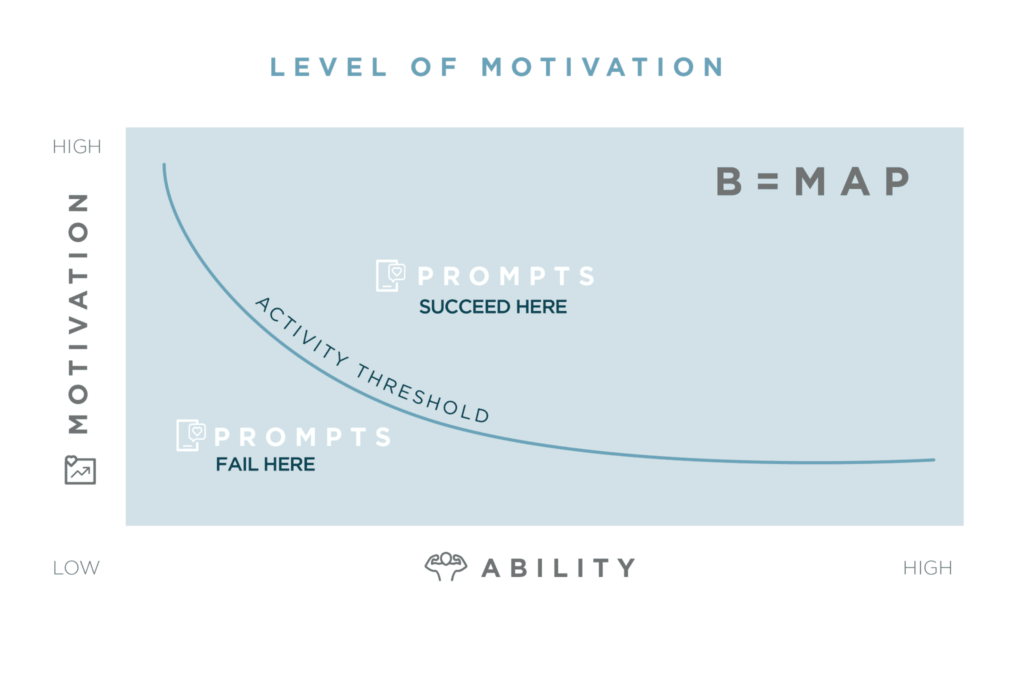
How to Design for Life Events
7 MINUTE READ
TEDDY ROOSEVELT
"People do not care how much you know until they know how much you care."
Getting married, having children, being diagnosed with a chronic illness, or starting a new job are life changing events that often catalyze changes in our perceptions and expectations of brands. Too often, these life events are treated as “actions” for businesses that just result in a change of a customer’s status within their segmentation model. Based on over a decade of helping companies innovate experiences, we believe these transformative life events present an opportunity to delight customers by anticipating the impacts of these events and making life easier for people. Companies should view these events as opportunities to design products, services, and customer experiences around the human needs born from these moments.
ONE OF THE BIGGEST MISTAKES A BUSINESS CAN MAKE IS TO VIEW THESE EVENTS AS A SIMPLE CHANGE IN STATUS
_
Life events mark moments of extreme vulnerability, in some cases joy, and in others suffering. These new chapters can unlock opportunities or pose barriers to continued behaviors—the severity of the life event affects the impact of this change. During the recovery process from an adverse life event, individuals transition their normal behaviors to accommodate for adjusted financial situations or time constraints. Businesses often fail to understand the unique needs associated with these milestones.
Traditionally, businesses designed their processes around increasing efficiency. Walmart became one of the most profitable companies by leading its market in supply chain management and price reduction. Efficiency is essential; however, life events sometimes necessitate a break from efficient, standard business processes.
Consider a customer with a new baby. They may feel emotionally and physically exhausted, overwhelmed, and nervous about caring for their child. They may feel the financial burden of all the baby gear they need to purchase. They need diapers, formula, bottles, clothes, bathing supplies, and a car seat. They are balancing both new cognitive and physical demands that give rise to new emotions, needs, and behaviors.
Their needs have changed. A customer with a new child represents an opportunity to sell new products and services. More importantly, a customer with a new child represents an opportunity to help that parent in a meaningful way, a way that creates an emotional connection between a customer and business.
CONSIDER THE FORCES OF CUSTOMER DECISION-MAKING
_
One framework for thinking about life event impacts is considering a balance of forces. If a customer is motivated to get something done, they are more likely to change their behavior. Conversely, if a task is complicated, it’s a challenge for the customer to change their behavior. The likelihood of behavior change is represented as a balance between motivation and ability. When motivation or ability changes, the forces allowing a customer to interact with a business also shift. A helpful and well-respected way to view this dynamic is through the lens of the Fogg Behavior Model.

Needs are forces that motivate customers to seek solutions. A company’s communications, affordability, and delivery model can all affect a customer’s ability to obtain needed solutions. New needs and new priorities create an imbalance of force. Failing to address their needs can drive your customer away. Conversely, identifying, considering, and designing for these needs can increase conversion, engagement, and loyalty. A Marketing Metrics study found that selling to an existing customer is 60-70% successful while selling to a new customer is only 5-20% successful.ii Well-designed customer experiences can be valuable as well as kind. For example, over 69% of Americans said that they are more loyal to organizations that “make me feel like they know me when I contact their customer service people.” iii
"89% of companies with "significantly above average" customer experiences perform better financially than competitors".iv
Qualtrics XM Institue
HOW TO KNOW IF YOUR CUSTOMERS ARE EXPERIENCING A MAJOR LIFE EVENT
_
Identifying when a customer goes through a life event is challenging. Predictive analytics play an increasingly important role in business, leading companies to conclusions about new customer needs. Asking your customer why their behavior changed can also be effective. Intentional design, and very few resources, can vault companies ahead of their competition.
Chewy, the number one online seller of pet-related products, asks why customers cancel subscriptions. Sometimes this is due to the death of a pet. Chewy’s customer service employees are empowered to send condolence gifts if the death of a pet causes the cancellation. Chewy’s also does not require a return for a refund. From floral bouquets to encouraging customers to donate unneeded products to animal shelters, Chewy’s customers are offered empathy and kindness in moments of emotional distress. The effects are measurable. Thousands of positive impressions on social media, word-of-mouth recommendations, and customer loyalty statements are common. Here is an example:
CHEWY CUSTOMER LOYALTY
“My wife has been taking [our] loss especially hard, and when we received the flowers, we decided it was enough for us both to decide to stop shopping around and give Chewy all our future business.”
Chewy.com
Chewy employs empathy and kindness and locks in customers for life. Empowering your employees to meet human needs with human solutions can get these exact results.v Getting curious about your customer’s behavior changes is just one way to build more empathy into your experiences. We’ve written about it before, and you can find that article here!
DESIGNING SERVICES FOR LIFE EVENTS
_
Another example of designing for life events is a significant health insurer who realized that a previously underserved stakeholder drove decisions for 11% of their healthcare costs. Caregivers, primarily responsible for the care of an experiencing individual long-term or severe illness, were experiencing barriers in carryout out their role. In this case, their primary customer’s life event, a major illness, creates physical, emotional, and financial stress in a secondary stakeholder’s life. The insurer approached Rêve to design for these caregivers because they wanted to help this new customer in a moment of immense need.
Through ethnographic research, we discovered a valuable stakeholder that impacted their bottom line. Additionally, caregivers struggle to take control of their loved one’s care. The value of programs for those with chronic illness often went unrealized because the insurer did not target the decision-maker in the program strategy. Though experiencing overwhelming pressure and decisions, the insurer did not consider caregivers as customers.
After identifying this new customer due to a life event, we asked what caregivers wanted most. What may not come as a surprise is that they wanted to get back to enjoying time with their loved ones instead of focusing on organizing healthcare and financial commitments. Caregivers were less able to enjoy those relationships with the stress and complexity of managing through complex healthcare systems. The critical takeaway is that customers must solve basic needs before achieving higher-order needs.vi
Rêve developed a comprehensive customer experience strategy and a central support center to help caregivers. We defined six stages of a caregiver’s journey through a synthesis of direct interviews and in-home ethnographies, leading to an innovative experience to help caregivers access patient health information needed to make decisions, find insurance coverage information, and navigate a new, complicated system. By solving basic needs, reducing pain points, and creating specific resources for this life event, Rêve helped caregivers regain the parts of their relationships they enjoyed most.
The insurer reduced healthcare costs for their primary customers and created a better experience for their primary and secondary customers. The caregiver resource center allowed the insurer to impact healthcare cost decisions, reduce the stress of managing a persistent illness, draw people further into the insurer’s ecosystem, and create more fulfilling relationships between caregivers and patients.
HOW RÊVE DESIGNS FOR CUSTOMER EXPERIENCE
_
Whether you are considering creating empathetic customer experiences internally, or are thinking about reaching out for help, we recommend you start with these steps:
View through a lens of life-changing events
Leverage data and “constants” to understand changes
Design experiences that delight customers experiencing life events
Constantly refine experience based on insights
You might be asking yourself what are customer experience “constants”? We consider these to be the must-haves in an experience that will guide our design and development of the future state. For example, these are some of the constants we use frequently:
- Meet customers where they are in their journey
Make their experiences easy and seamless
Ensure you show that you know them individually
Create flexible interactions to allow customers to make empowered decisions
Show, rather than tell, customers that your business cares about them
Solving for customer experiences specific to life events creates measurable value to financial outcomes. Solving for needs created by life events increases loyalty, engagement, and conversion rates. Finally, it is the right thing to do to make the world a better place.
SOURCES
i Cohen, Arianne. “How Major Life Events Impact Our Long-Term Wellbeing”. Bbc.Com, 2022, https://www.bbc.com/worklife/article/20200929-how-major-life-events-impact-our-long-term-wellbeing. https://www.bbc.com/worklife/article/20200929-how-major-life-events-impact-our-long-term-wellbeing
ii Hull, Patrick. “Don’t Get Lazy About Your Client Relationships”. Forbes, 2022, https://www.forbes.com/sites/patrickhull/2013/12/06/tools-for-entrepreneurs-to-retain-clients/?sh=4d1bcd4b2443. https://www.forbes.com/sites/patrickhull/2013/12/06/tools-for-entrepreneurs-to-retain-clients/?sh=4d1bcd4b2443
iii Qualtrics.Com, 2022, https://www.qualtrics.com/m/assets/wp-content/uploads/2020/04/XMI_GlobalStateOfXM-2020.pdf. https://www.qualtrics.com/m/assets/wp-content/uploads/2020/04/XMI_GlobalStateOfXM-2020.pdf
iv “Custom Millennial Research On Customer Service Expectations”. The Center For Generational Kinetics, 2022, https://genhq.com/generations-gen-y-millennials-research/millennial-research-on-customer-service-expectations/. https://genhq.com/generations-gen-y-millennials-research/millennial-research-on-customer-service-expectations/
v Dunham, Nancy. “Compassionate Pet Company Sends Moving Gifts To Grieving Pet Parents: ‘We Are Part Of Their Families'”. PEOPLE.Com, 2022, https://people.com/pets/compassionate-pet-company-sends-moving-gifts-to-grieving-pet-parents-we-are-part-of-their-families/. https://people.com/pets/compassionate-pet-company-sends-moving-gifts-to-grieving-pet-parents-we-are-part-of-their-families
vi Hopper, Elizabeth. “Maslow’s Hierarchy Of Needs Explained”. Thoughtco, 2022, https://www.thoughtco.com/maslows-hierarchy-of-needs-4582571. https://www.thoughtco.com/maslows-hierarchy-of-needs-4582571
